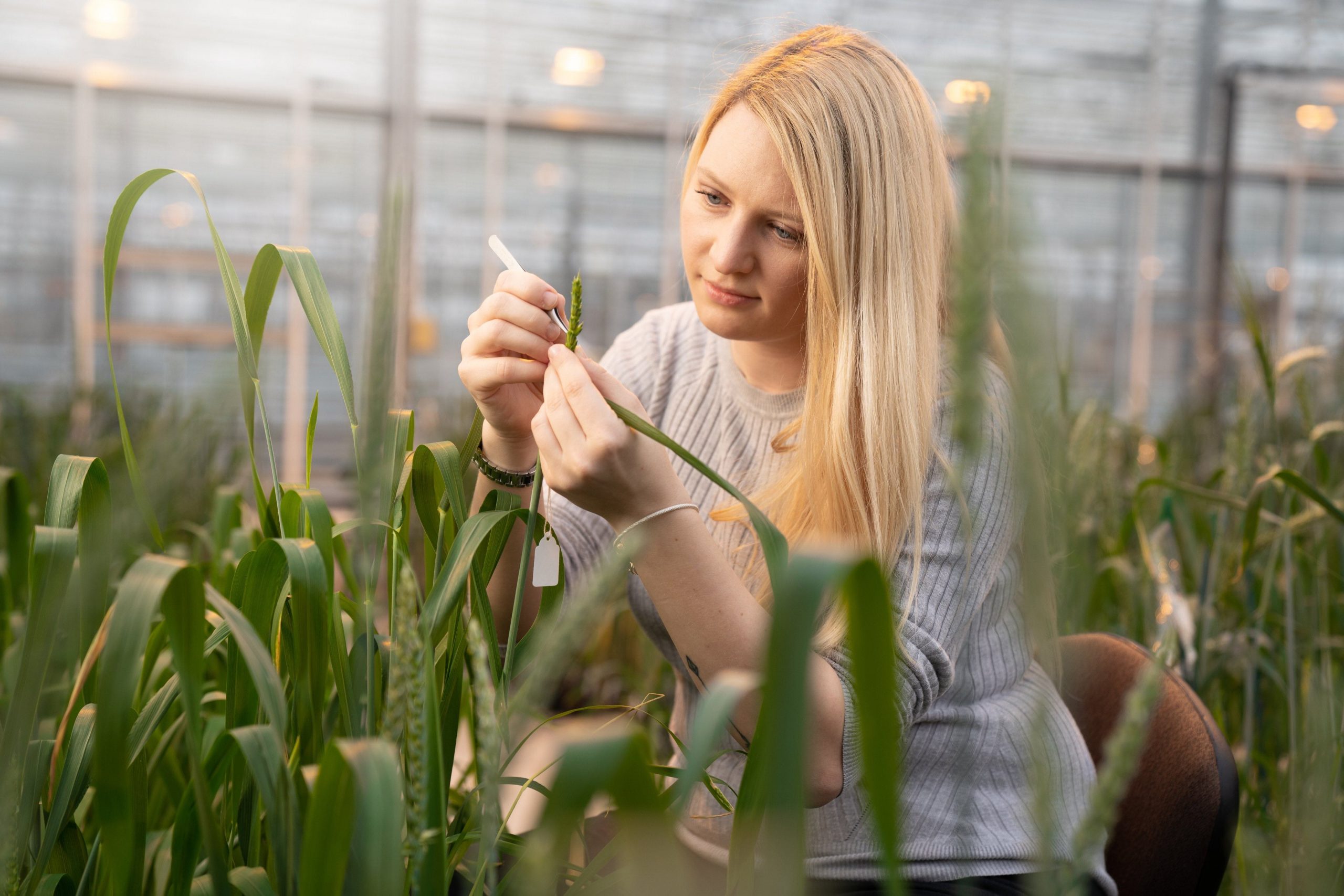
January 16, 2023, by Lexi Earl
Diversity in wheat and the potential solutions
Wheat is one of the most essential crops in modern day diets. Alongside rice and soy, wheat is a staple food for many and a fundamental ingredient in many food stuffs. In this blog post, PhD candidate Nicola Walter outlines how diversity in wheat has been affected by generations of breeding, and the different ways scientists are attempting to combat the vulnerabilities of wheat.
Bread is wonderful, isn’t it? Not just bread, but pastries, biscuits, cakes… To me, these foods represent sharing, comfort, community and bringing people together. Breads (and pastries, biscuits, cakes) are traditionally made with wheat and diversity in wheat is the reason we have these varied foods. Diversity of flour quality contributes to all the different and delicious textures. Diversity in optimal growth conditions of the plant means that wheat is one of the few plants that can be grown all over the world, in many different climates, contributing to the wide variety of breads and wheat-based foods around the world.
However, diversity isn’t always a helpful thing for growers. When we picture a field of wheat, it is often of blue skies, the sun shining over an ocean of lush green or rich gold, the occasional waft of breeze sending shimmers through the field like the gentle lap of the tide. But this beauty isn’t exactly how nature intended, it is more how humans intended.
A field of wild wheat would be very different – diverse and chaotic. Heads of wheat all at different heights, some collapsed from the wind, some too small to differentiate between crop and weed, some too tiny to extract flour. Can you imagine how we would sift through the grain, trying to consistently extract the flour? How would we begin to think about harvesting and milling this diverse collection? How would we process enough flour to meet our daily needs?
Luckily, whether through conscious thought or otherwise, our ancestors did the hard work for us. Through picking the plumpest grains that produced the most flour that was easiest to harvest and extract, that grew well on the soil where the farmer lived, we have created uniform, picturesque fields of wheat – a slow, generational form of genetic selection. Modern wheat provides high yields from the land it grows on, and is easy to collect with combine harvesters. This wheat uses all the fertilisers and resources that we give it but still doesn’t grow so tall that it falls over (thank you, Norman Borlaug). This is a wheat that enables us to predict grain quality and designate for different purposes; that we know grows well in a certain area. Uniformity, taming our wild wheats, has allowed us to feed our growing population at a scale far beyond what we were capable of with the diverse ancestors of wheat.
Unfortunately, the story doesn’t quite end there. Uniformity creates vulnerability, and whilst we have diversity in our modern wheat varieties for some traits, it is not enough. We all remember 2020, when COVID-19 ravaged the global population, taking advantage of a specific gene to infiltrate our bodies. We’ve had viruses before – colds, flu and the like – but in living memory, never something as impactful as SARS-COV-2. What if we had a disease that affected our major food crops at the same scale?
We have many pathogenic challenges to wheat – Rust, Fusarium Head Blight, Septoria – all current threats to our food systems that scientists and breeders are fighting against. This fight is largely conducted through genetics – finding genes that confer resistance. The only problem is, we’ve worked so hard at creating these perfect modern wheats, that we don’t have many genes left to choose from. Through conscious and unconscious breeding efforts, the wheat genome has been bottlenecked, and many useful genes have been lost. So, how can we improve its genetic diversity and bring more useful genes back?
Wild Relatives
At the BBSRC Nottingham Wheat Research Centre based at University of Nottingham, the King’s group are finding a novel source of genes in wild relatives of wheat. Whilst agronomically unsuitable for reasons mentioned earlier, wheat wild relatives such as Aegilops speltoides, Aegilops tauschii, and Amblyopyrum muticum still hold an array of genetically diverse, potentially useful genes for many different traits.
A recent highlight has been the wheat-Triticum timopheevi introgression lines. A few years ago, it was shown that some accessions of the wheat wild relative T. timopheevi were highly resistant to Fusarium Head Blight (FHB), a fungal disease that causes significant damage to global wheat crops. The King’s group set about to transfer this resistance from the wild relative into wheat, using techniques such as Genomic in situ Hybridisation to track the introgressions in the chromosomes of each generation. Finally, these introgression lines were screened for FHB, and resistance was found in plants that had a substituted segment of wild relative in chromosome 3B. Excitingly, these lines can now go forward to plant breeders for field trials.

Genomic in situ Hybridisation is used to track the introgressions in the chromosomes of each generation.
This is just one way scientists are seeking to secure future food security in the shadow of climate change and a rising global population. However, the world of wheat science is an exciting, vibrant and impactful area of research that is using a variety of approaches to improve our current crops – thankfully, as where would we be without bread?
Come back next week for more stories about wheat.
No comments yet, fill out a comment to be the first

Leave a Reply